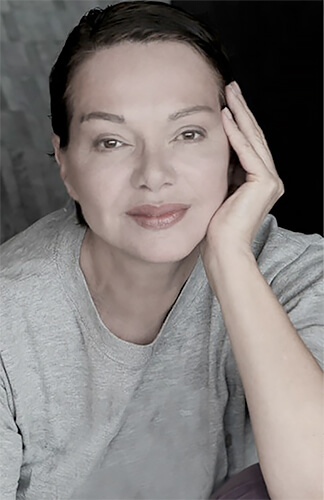German fine art photographer, born near Cologne, Gabriele Viertel now lives and works in Eindhoven, Netherlands.
She grew up as the youngest of 3 children in a rural area with an extended family of aunts, uncles and cousins. Inspired by her father, an avid filmmaker and amateur photographer, she took for the first time at the age of 14 his analogue camera to photograph the children of the family.
During the education in technical design, she worked as a model to fund the studie. Completed the degree, Gabriele decided to move on to pursue the international career as a model and worked more than a decade for designers such as Dior and Karl Lagerfeld. Since 2008 she dedicated herself entirely to the art of photography as a freelance artist.
Conceptually, Viertel's images play with the dialog between the mediums of painting and photography. The magical, often surreal pictorial language and the chiaroscuro light are characteristic means of expression. The major part of her works is staged underwater. Gabriele has received numerous awards, most recently the platin award of Graphis New York, the gold medal of the International Color Award, the silver medal of Prix de la Photographie Paris as well as the Merit Award of Best of Contemporary Photography, Fort Wayne Museum of Art. Her work has been featured in international exhibitions and publications in Europe and North America, notably the Museum of Art Fort Wayne and the Heritage Municipal Museum Malaga. One book on her work has been published by Associazione Artistico Culturale Cameraraw.it. Gabriele's works are in the public collections of the Fort Wayne Museum of Art, Indiana USA and the University of Art, Rotterdam NL as well as in various private collections.
